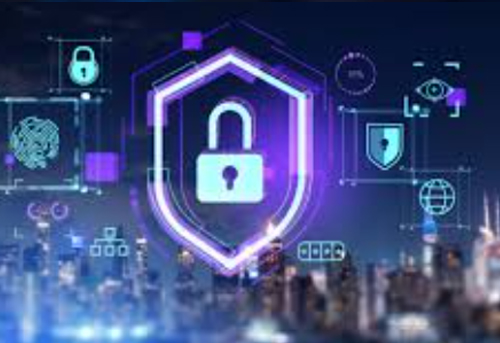Government Agencies
Cybersecurity for government agencies is a critical concern, as these organizations are prime targets for cyberattacks due to their valuable data, critical infrastructure, and sensitive information. Securing government networks, systems, and data is essential for national security, the protection of citizens’ privacy, and the continuity of essential public services. Below is an overview of the key aspects of cybersecurity for government agencies:
1. Threat Landscape
Government agencies are targeted by a wide range of cyber threats, including:
Nation-State Actors: These are often sophisticated cyberattacks by foreign governments or intelligence agencies. They are typically aimed at espionage, disrupting critical infrastructure, or influencing political processes.
Hacktivists: Groups or individuals with political motives may attempt to compromise government systems to make a statement or disrupt operations.
Cybercriminals: These actors may target government agencies for financial gain, often through ransomware attacks, data breaches, or other forms of extortion.
Insiders: Employees or contractors with access to sensitive information may intentionally or unintentionally compromise security, making insider threats a significant concern.
2. Key Cybersecurity Measures for Government Agencies
To mitigate risks and ensure the integrity of operations, government agencies must implement a multi-layered cybersecurity strategy, including:
a. Network Security
Firewalls: To filter malicious traffic and restrict unauthorized access to government networks.
Intrusion Detection Systems (IDS) & Intrusion Prevention Systems (IPS): These systems help identify and block potential threats in real-time.
Zero Trust Architecture (ZTA): This approach assumes no user or device can be trusted by default, even if they are inside the network perimeter. All access requests are continuously verified.
b. Data Encryption and Protection
Encryption: Government agencies must ensure that sensitive data is encrypted both at rest and in transit to prevent unauthorized access.
Data Masking and Tokenization: For protecting sensitive data, especially in cloud or third-party environments.
c. Identity and Access Management (IAM)
Multi-Factor Authentication (MFA): Government agencies should enforce MFA to ensure that access to systems and data is granted only to authorized users.
Role-Based Access Control (RBAC): Limit access to data based on the user’s role, reducing the potential for exposure of sensitive information.
d. Incident Response and Recovery
Incident Response Plan: Government agencies must have well-documented procedures to detect, respond to, and recover from cyber incidents. This includes having a dedicated cybersecurity operations center (SOC) for real-time monitoring and response.
Backup and Disaster Recovery: Regularly backing up critical data and systems ensures quick recovery in the event of a cyberattack, such as a ransomware infection.
e. Vulnerability Management and Patch Management
Regular Patching: Vulnerabilities in software and systems are often exploited by attackers. Government agencies must ensure timely application of patches and updates.
Vulnerability Scanning: Regular assessments of systems and networks for security weaknesses.
f. Training and Awareness
Cybersecurity Training: Government employees should undergo regular training on identifying phishing attempts, securing passwords, and other best practices.
Simulated Attacks: Running exercises, like red team vs. blue team simulations, to identify weaknesses and improve response protocols.
g. Supply Chain Security
Third-Party Risk Management: Many government agencies rely on third-party contractors for software, hardware, and services. Ensuring these vendors adhere to cybersecurity best practices is critical to minimizing risks from the supply chain.
3. Compliance and Regulations
Government agencies must comply with various cybersecurity frameworks, standards, and regulations to maintain the security and privacy of sensitive data. These include:
Federal Information Security Modernization Act (FISMA): Requires U.S. federal agencies to secure their information systems and to adhere to specific security requirements and risk management processes.
General Data Protection Regulation (GDPR): In Europe, government agencies must comply with data protection regulations to safeguard personal data.
National Institute of Standards and Technology (NIST) Cybersecurity Framework: Provides guidelines for identifying, protecting, detecting, responding to, and recovering from cyber incidents.
Critical Infrastructure Protection (CIP): Regulations specific to securing critical infrastructure, including government networks, utilities, and defense systems.
4. Collaboration and Information Sharing
Government agencies must work together to share threat intelligence and best practices. In many countries, agencies share cybersecurity information through:
Information Sharing and Analysis Centers (ISACs): These facilitate the exchange of information about cyber threats between the public and private sectors.
Public-Private Partnerships (PPP): Governments collaborate with the private sector to protect critical infrastructure, such as power grids, financial services, and communications.
5. Emerging Technologies in Government Cybersecurity
As technology evolves, so do the tools and techniques used to secure government systems. Some emerging technologies in cybersecurity for government agencies include:
Artificial Intelligence and Machine Learning: AI/ML can be used for anomaly detection, identifying patterns in network traffic, and detecting new types of malware.
Blockchain: For secure data sharing and transactions, especially in voting systems, identity management, and other sensitive operations.
Quantum Computing: Although still in its early stages, quantum computing may pose a future threat to traditional encryption methods, prompting agencies to research quantum-resistant encryption algorithms.
6. Challenges in Government Cybersecurity
Legacy Systems: Many government agencies still rely on outdated technologies and legacy systems, which can be vulnerable to attacks.
Resource Constraints: Cybersecurity can be costly, and many government agencies may lack the funding or staffing to implement the latest security measures.
Political and Bureaucratic Challenges: Decision-making in government organizations can be slow, making it harder to respond to emerging cybersecurity threats quickly.
Global Cybersecurity Landscape: The international nature of cyber threats, along with varying laws and regulations, complicates collaboration and enforcement.
